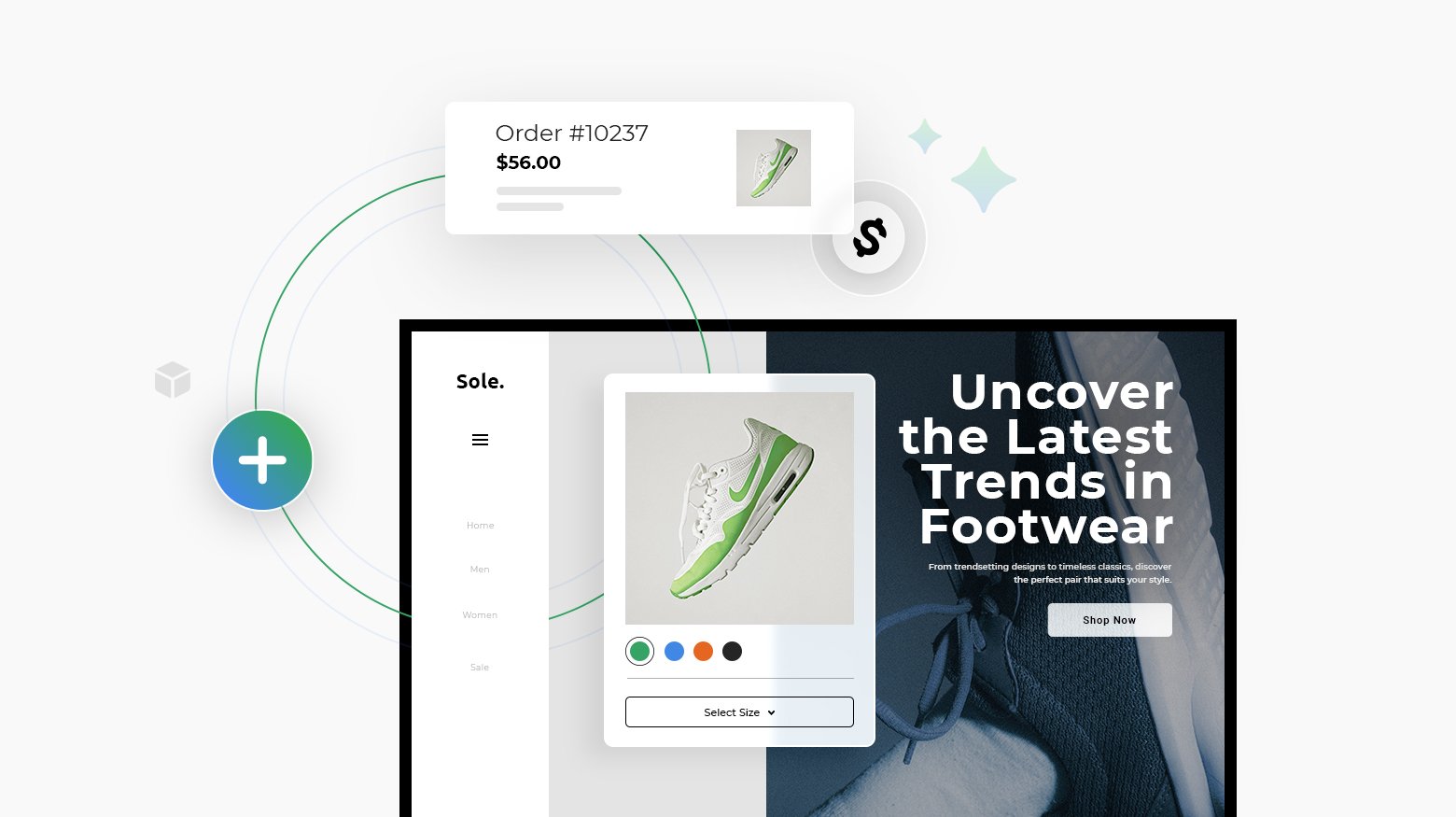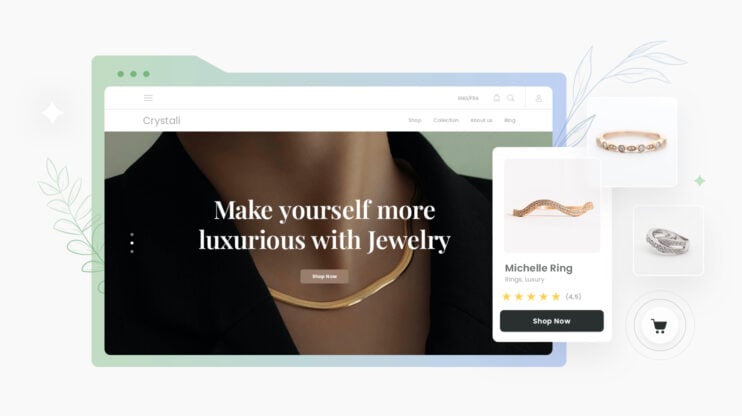Starting a beauty business is an exciting adventure. The beauty industry has been growing steadily. The U.S. Beauty & Personal Care market is expected to reach $105 billion by 2028. This growth means there’s plenty of potential for new businesses.
However, success in this industry requires careful planning and preparation. To stand out, you must know your niche, target audience, and competitors.
FAQ
How do I start a beauty business from scratch?
To start a beauty business from scratch, begin with thorough market research to understand your target audience and competitors. Create a solid business plan outlining your services, budget, and marketing strategy. Register your business and obtain any necessary licenses or permits. Invest in quality products and equipment, and consider starting with a small range of services before expanding. Build an online presence through a website and social media to attract clients.
Is it hard to start a beauty business?
Starting a beauty business can be challenging due to competition and the need for industry-specific knowledge. It requires significant planning, investment, and marketing efforts. However, with passion, dedication, and the right strategy, it is possible to establish a successful beauty business. Networking and staying updated with beauty trends can also give you an edge.
What do you need to run a beauty business?
To run a beauty business, you need a business plan, licenses, and permits. Invest in quality beauty products and equipment, hire skilled staff, and create a welcoming environment for clients. Marketing is crucial, so develop a strong online presence and engage with your customers on social media. Additionally, excellent customer service and staying updated with industry trends are vital for long-term success.
How do I start my own beauty shop?
Starting your own beauty shop involves several key steps. First, conduct market research and write a business plan. Find a suitable location and ensure it meets local regulations for health and safety. Obtain the necessary licenses and permits, and purchase quality products and equipment. Hire qualified staff, and implement a marketing strategy to attract clients. Creating an inviting atmosphere in your shop will also enhance customer satisfaction.
What is the most profitable beauty service?
The most profitable beauty service can vary, but commonly, services like permanent makeup, microblading, laser hair removal, and advanced skincare treatments tend to be highly profitable. These services often have higher price points and repeat clientele, providing a steady revenue stream. However, profitability can also depend on your location, market demand, and the quality of service you provide.
Get a head start on website creation with AI
Create a custom website tailored to your business needs 10X faster with 10Web AI Website Builder!
Stage 1: How to start a beauty business
Starting a beauty business begins with careful planning and strategic thinking. You’ll need to understand the market, decide on a clear business model, and define your niche and target audience.

Step 1. Assessing market demand and research
You need to know if there’s a demand for your beauty products or services. Start by identifying current trends, gaps, and competition in the beauty market.
Survey potential customers to learn about their needs and preferences. Use tools like Google Trends and social media analytics to gather insights. Pay attention to both local and global market trends.
Analyze your competitors to understand what they’re offering and identify any gaps they might be missing. This information will help you shape your business to stand out.
Step 2. Decide on a business model and concept
Deciding on your business model is crucial. Consider whether you’ll offer products, services, or a combination of both. Each model has its pros and cons.
For a product-based business, think about manufacturing, sourcing, and inventory management. If you choose a service-based model, consider the type of beauty services you’ll offer, like makeup, hair, or skincare. A hybrid model combines both and can offer more flexibility and revenue streams.
Explore various concepts like mobile beauty services, online stores, or physical retail locations. Assess which one aligns best with your resources, skills, and market conditions. Your decision will shape the rest of your planning.
Step 3. Defining your niche and target audience
Defining your niche and target audience is essential. Start by identifying your passions and expertise. What part of the beauty industry excites you the most?
Study the market trends to see where gaps exist. Look for underserved areas or needs that aren’t being met by current providers. Your niche should fill these gaps and offer something unique.
Define your target audience by demographics such as age, gender, location, and interests. Understand their preferences and pain points. Create a unique selling proposition (USP) that sets you apart from the competition. Test your ideas with potential customers through surveys or focus groups. This feedback will help you refine your offerings and ensure you meet the needs of your target market.

Step 4. Crafting a robust business plan
Starting with a good plan is key to your beauty business success. Here’s how you can create a solid business plan:
- Executive summary: Write a brief overview of your business idea. Mention what makes your beauty business unique.
- Company description and structure: Describe your business, including its name, location, and the type of beauty services you offer. Outline the legal structure (e.g., sole proprietorship, partnership, LLC).
- Market analysis and competition: Research and note details about the beauty industry. Identify your target market and competitors. Explain how your business will stand out.
- Product and service offerings: List the beauty products and services you will offer. Ensure you highlight what makes them special or different from others.
- Marketing and sales strategies: Define how you will attract customers. Explain your marketing plan, including online and offline strategies. Specify any promotional tactics.
- Organizational structure and management: Show how your business will be organized with charts or lists. Include details about the team’s roles and responsibilities.
- Financial projections and funding needs: Create detailed financial projections like sales forecasts, expense budgets, and profit margins. Mention any funding you may need and why.
- Risk analysis and contingency plans: Identify possible risks to your business. Explain how you plan to manage these risks or what backup plans you have.
Step 5. Building your brand identity
Creating a strong brand identity is key to standing out in the beauty industry. This involves selecting a unique business name and logo, developing a compelling brand story and mission, and designing consistent branding elements.
WordPress hosting that's fully automated
Host on 10Web's high performance infrastructure and enjoy all the benefits of a secure Google Cloud Partner hosting and website building with AI.
Choosing a unique business name and logo
Your business name should be unique and memorable. It should reflect what your business stands for and appeal to your target audience.
Brainstorm several names that capture your brand’s essence. Consider using a thesaurus to find creative alternatives.
Ensure the name is easy to pronounce and spell. You don’t want potential customers struggling to find you online.
Next, design an eye-catching logo. Your logo is a visual representation of your brand. It should be simple yet distinct.
Hire a professional designer if possible. They can create a logo that captures your brand’s personality.
Creating a compelling brand story and mission
Your brand story is what sets you apart from competitors. It communicates your journey, values, and what drives your passion for the beauty industry.
Start by outlining your background. Why did you decide to start this beauty business? What challenges did you overcome?
Then, craft a mission statement. This should be a clear and concise declaration of your brand’s purpose.
State how you aim to impact the beauty industry. Focus on your unique selling proposition (USP). This could be anything from using sustainable products to offering personalized services.
Designing your branding elements
Branding elements include colors, typography, and imagery used in your marketing materials.
Choose colors that evoke emotions you want associated with your brand. For instance, green suggests eco-friendliness, while pink often represents femininity.
Select fonts that are easy to read and align with your brand’s tone. Avoid using more than two different fonts to maintain consistency.
Create a style guide that outlines how these elements should be used across all platforms. This ensures that your brand appears cohesive whether on social media, your website, or print materials.
Remember, consistency is key in establishing a strong brand identity.
Step 6. Legalities and structure
When starting a beauty business, it’s crucial to understand the legalities and structure. Choosing the right business structure and getting the necessary permits and insurance will help set the foundation for success.

Determining the right business structure
Choosing the right legal structure depends on your business goals and needs. The most common options are sole proprietorship, limited liability company (LLC), and corporation.
- Sole Proprietorship: This is the simplest and cheapest structure to form. You, as the owner, are personally liable for the business. This means your personal assets could be at risk if there are legal issues.
- Limited Liability Company (LLC): An LLC protects your personal assets by separating them from your business assets. This structure offers flexibility in management and taxation. It’s a popular choice for small beauty businesses.
- Corporation: Corporations offer limited liability but are more complex and expensive to set up. They require more paperwork and are subject to double taxation (taxes on profits and dividends).
Consulting a lawyer can help you determine the best structure for your beauty business. Make sure to register your business according to state and federal regulations.
Understanding permits, insurance, and compliance
It’s important to comply with local, state, and federal laws to avoid penalties. Here are key steps to follow:
- Obtain necessary permits and licenses: Depending on your location, you may need a general business license, health permits, and specific beauty-related permits. Check with your local government for requirements.
- Get insurance: Insurance protects your business from financial losses. Common policies for beauty businesses include general liability, professional liability, and property insurance. General liability covers accidents, while professional liability covers negligence claims. Property insurance protects your assets from damage or theft.
- Stay compliant: Regularly update your business licenses and permits. File annual reports if required. Understand tax obligations and consider hiring a professional to handle your taxes.
Step 7. Financial planning
Starting a beauty business means managing your finances well. Below are steps to help you with financial planning:
- Set up finances and secure funding
First, open a business bank account. This keeps your business money separate from personal money, making accounting easier. Next, explore funding options like loans or investors to get the needed capital. - Budgeting and financial planning
Create a detailed budget. List all your expenses, including rent, supplies, and employee wages. Compare these costs to projected revenue to ensure your business can be profitable. - Exploring funding options
Check out various funding sources:- Bank loans: Good if you have a solid credit history.
- Investors: Ideal if you give up some control in exchange for capital.
- Personal savings: Use your own money if possible to avoid debt.
- Revenue
Estimate your revenue by researching how much customers pay for services similar to yours. Keep track of all the money your business makes from services and product sales. - Pricing
Set your prices based on the cost of supplies, competitor prices, and your target profit margin. Make sure your services are priced competitively yet enough to cover your expenses and make a profit. - Taxes
Understand your tax obligations. Set aside money for taxes and consider hiring an accountant or using accounting software to manage your taxes properly.
Stage 2: Setting up a beauty business
Starting a beauty business involves key decisions such as sourcing suppliers, formulating products, and maintaining eco-friendly practices. Each step ensures the quality and appeal of your beauty line.
Step 1. Sourcing suppliers and manufacturers
Finding reliable suppliers and manufacturers is crucial. Here’s a step-by-step guide to help you:
- Identify your needs: Determine the types of products you want to offer.
- Research suppliers: Look for suppliers with a good reputation for delivering high-quality ingredients and equipment.
- Request samples: Obtain samples to test the quality.
- Compare pricing: Evaluate the cost against your budget.
- Negotiate terms: Discuss payment terms, delivery schedules, and minimum order quantities.
- Visit facilities: If possible, visit the supplier’s site or lab to inspect their operations.
Formulating beauty products
Creating effective and appealing beauty products requires careful formulation. Follow these steps:
- Define product goals: Decide the purpose and benefit of each product.
- Select ingredients: Choose high-quality, safe ingredients that meet your goals.
- Hire experts: Work with chemists or labs experienced in beauty products.
- Test formulations: Conduct trials to ensure stability and effectiveness.
- Packaging design: Develop functional and attractive packaging that protects the product.
- Labeling: Ensure labels meet regulatory standards and provide clear information.
Eco-friendly and cruelty-free options
More consumers prefer products that are eco-friendly and cruelty-free. Here are important considerations:
- Select sustainable ingredients: Choose organic or natural materials that are responsibly sourced.
- Packaging choices: Reduce waste by using recyclable, biodegradable, or minimal packaging.
- Cruelty-free testing: Ensure products are not tested on animals. Look for suppliers and manufacturers that follow cruelty-free practices.
- Certifications: Obtain certifications like Leaping Bunny or ECOCERT to build trust with your audience.
- Transparency: Communicate your eco-friendly and cruelty-free practices to consumers.
Step 2. Setting up your location
To start your beauty business, you must decide whether to operate from a salon or home. You must also consider renting versus purchasing equipment and space.
Choosing a salon or home-based business
Decide between setting up a salon or working from home. A salon offers more space and a professional look but requires higher costs and more permits. A home-based business is cheaper and more convenient but may limit your services due to space and local zoning laws.
Consider the services you want to provide. For example, offering haircuts or spa treatments might need more space and specialized equipment. Also, think about your target audience. Are they looking for a high-end experience or prefer a more personal, home-based setting?
Weigh the pros and cons. A salon can attract walk-in clients and seems more established. A home setup saves money and time but might limit your growth potential.
Renting vs. purchasing equipment and space
When setting up your beauty business, you must decide between renting or purchasing equipment and space.
Renting equipment and space might cost less upfront, giving you the flexibility to upgrade. However, rent payments can increase, especially if your business grows.
On the other hand, purchasing equipment and space requires a larger initial investment. Buying equipment means you own it; over time, it can be more cost-effective. Owning your space can also build equity, and you avoid issues like lease agreements or landlords raising rent.
List your essential equipment needs, like chairs, mirrors, and beauty tools. Check your budget and financial plan to see if you can afford the upfront costs. Remember, your choice will affect your cash flow and long-term financial health, so choose wisely.
Stage 3: Building and marketing your online presence
A strong online presence is essential for the success of your beauty business. This includes having a professional website, setting up an ecommerce platform, and managing your website effectively.
Step 1. Developing a professional website
Creating a professional website is your first step. Your website should showcase your brand and services. Ensure you include essential pages like Home, About Us, Services, Shop, and Contact Us. These pages help customers learn about your business and navigate your site easily.
Using web hosting services like 10Web’s AI-powered WordPress platform can streamline the process by helping you generate a branded website quickly. This platform also offers automated hosting, which simplifies maintenance.

Looking to sell online?
Create your custom online store in minutes with 10Web AI Ecommerce Website Builder and take your business online.
Formatting matters. Use clear headings and professional images. Your website should be easy to read and visually appealing. Don’t forget to include a memorable logo and your brand colors to make your site stand out.
Setting up an ecommerce store for a beauty business
An ecommerce platform is crucial for selling products and services online. Choose a platform that fits your needs, such as WordPress and WooCommerce. The AI Ecommerce Website Builder can help you efficiently set up your online store.
This time-saving tool starts by asking you about your business and what industry you’re in.
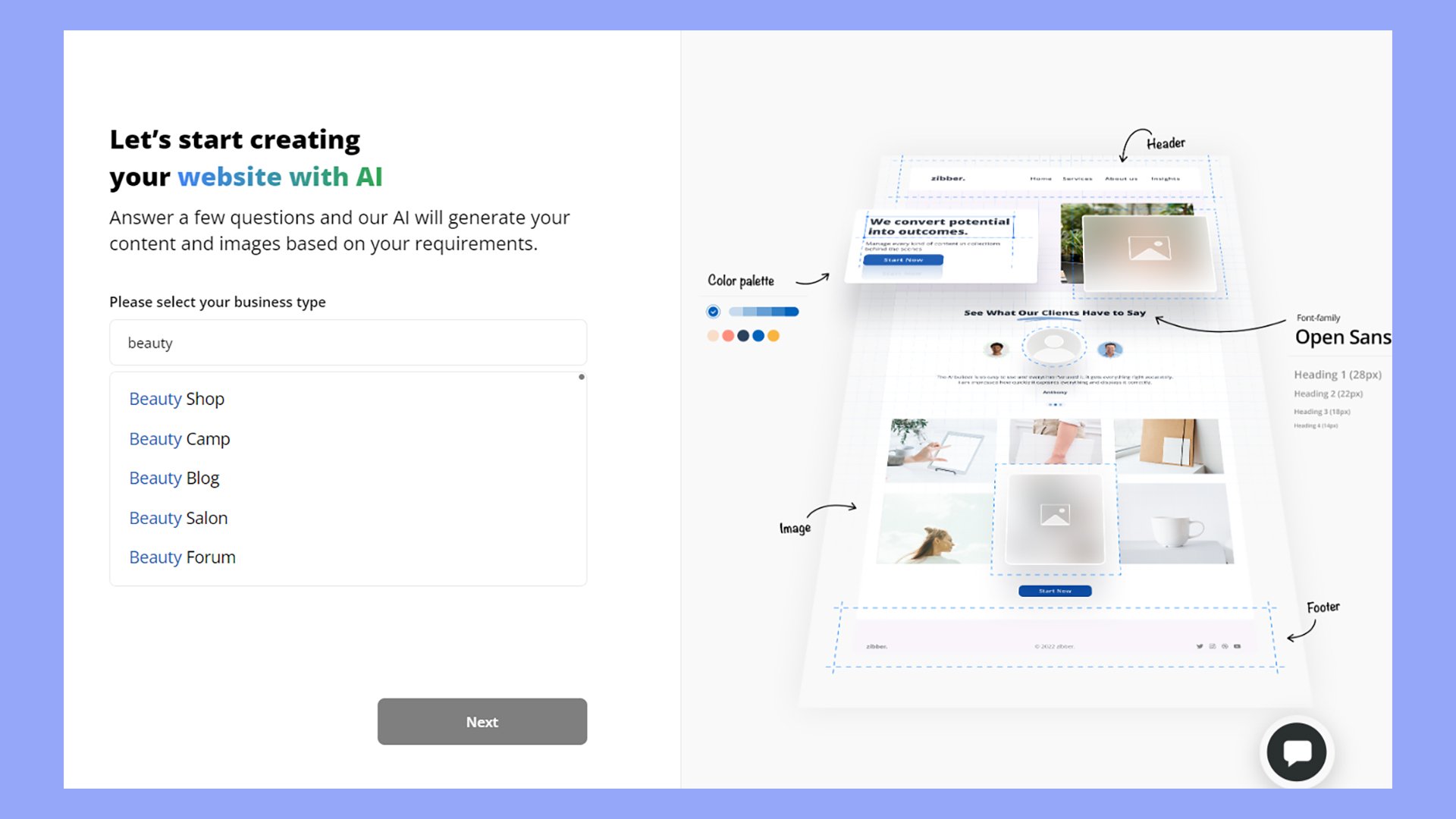
Then, AI takes over and generates a unique, customizable, ecommerce-ready website.
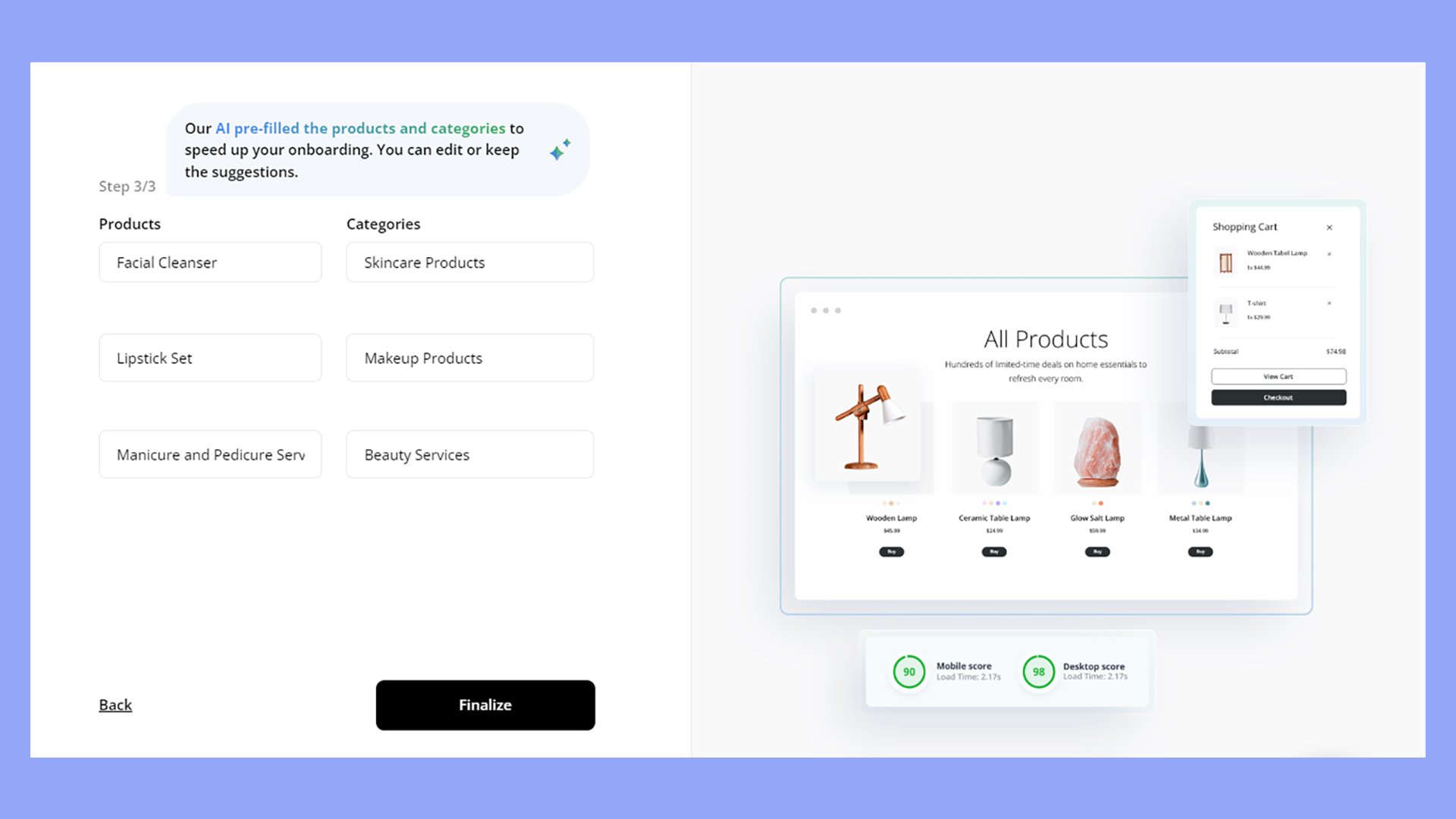
Once your site is ready, you can edit pages, add content, and implement new features with the 10Web Builder.
When setting up your ecommerce site, integrate features like a shopping cart, payment gateways, and product listings. Offer multiple payment options to cater to different customers. Ensure the checkout process is smooth and secure to build trust with your customers.
Organize your products into categories, and use high-quality images and detailed descriptions. This will help customers find what they need and make informed purchasing decisions.
Step 2. Managing your website
Once your website is up and running, managing and updating it regularly is important. Fresh content keeps your audience engaged and helps with search engine rankings. Update your blog, add new products, and keep your information current.
Check your website regularly for broken links or outdated information. Use tools like Google Analytics to monitor its performance and understand user behavior. This data can help you make informed decisions and improve its functionality.
Invest in good security measures to protect your site and customer data. Regular backups and updates are essential for maintaining a reliable and safe website. Consider using managed hosting services to handle these tasks, allowing you to focus on growing your business.
Step 3. Marketing and promotion
Effective marketing and promotion are key to success in the beauty business. This involves using social media and influencers and implementing strategic marketing campaigns.
Leveraging social media and influencers
Social media is a powerful tool for beauty businesses. Platforms like Instagram, TikTok, and YouTube are popular for sharing beauty content.
Create engaging posts that highlight your products or services. Use high-quality images and videos to attract attention. Respond to comments and messages to engage with your followers.
Collaborating with influencers can boost your visibility. Choose influencers whose audience matches your target customers. Influencers can review your products, show tutorials, or simply mention your brand in their posts, greatly increasing brand awareness.
Paid promotions on social media can also help. Platforms offer targeted advertising that can reach specific demographics. This ensures that your ads are seen by people who are interested in beauty products.
Implementing marketing strategies and campaigns
A clear marketing strategy is essential. Start with understanding your target audience. Who are they? What are their needs and preferences? Use this information to tailor your marketing efforts.
Email marketing is an effective way to stay in touch with your customers. Send newsletters about new products, special offers, or beauty tips. Personalized emails can increase customer engagement.
Paid advertising, such as Google ads, can drive traffic to your website. Ensure that your ads are well-crafted and lead to a user-friendly landing page.
Local marketing should not be overlooked. Attend community events, sponsor local activities, or host in-store events to attract local customers.
Using a mix of these strategies can help you effectively promote your beauty business and build a loyal customer base.
Step 4. Starting your beauty business
Successfully starting your beauty business requires careful planning and testing. Hosting a launch event and offering your products or services initially for feedback are key steps to starting strong.
Planning your launch event
A launch event can create buzz and attract customers’ attention. Here’s how you can plan a successful launch:
- Choose a theme: Your launch should reflect the essence of your brand. Whether it’s elegance, fun, or eco-friendly, pick a theme that resonates with your target audience.
- Select a venue: Decide whether your event will be online or in-person. If in-person, pick a location that’s accessible and stylish. For online events, ensure you have a reliable platform.
- Create a guest list: Invite influencers, potential customers, and partners. Ensure you have a good mix to maximize reach.
- Plan activities: Arrange product demos, Q&A sessions, and giveaways to engage your attendees.
- Promote the event: Use social media, emails, and partnerships to spread the word. Promotion should highlight what makes your brand unique.
Testing the market with initial offerings
Before fully launching your beauty products, testing with initial offerings is crucial:
- Offer samples: Allow potential customers to try your products at a reduced rate or even free. This helps you gather honest feedback.
- Gather reviews: Encourage testers to leave reviews online or on social media. Positive reviews can boost your product’s credibility.
- Analyze feedback: Use the feedback to tweak your products. Pay attention to recurring themes in the comments to identify necessary improvements.
- Adjust marketing strategies: Based on the responses, refine your marketing approaches to better appeal to your target market.
- Build relationships: Engage with your testers and early customers. Build a community around your brand that fosters loyalty and trust.
Stage 4: Management and growth
Effective management and strategic growth are key to ensuring the success of your beauty business. This section will guide you through hiring staff, delegating tasks, and improving customer service by incorporating customer feedback.
Step 1. Hiring staff and delegating tasks
To grow your beauty business, you need a talented team. Start by clearly defining the roles you need to fill. Common positions include:
- Estheticians: Provide skincare treatments.
- Hair Stylists: Handle all hair-related services.
- Receptionists: Manage appointments and client communications.
When hiring, look for candidates with relevant experience and a passion for beauty services. Conduct interviews to ensure they fit your brand’s culture and values.
Delegate tasks based on each staff member’s strengths. For example, let an esthetician handle skincare services while a receptionist manages bookings. Clear job descriptions and regular meetings can help ensure everyone knows their responsibilities. Use software tools to streamline scheduling and task management so your team can focus on delivering excellent service.
Step 2. Customer feedback and service improvement
Listening to your customers is vital for growth. Encourage clients to share their experiences and suggestions.
You can gather feedback through:
- Surveys: Send out short, easy-to-fill forms after appointments.
- Reviews: Ask customers to leave reviews on your website or social media.
- Direct Communication: Train staff to ask for feedback during and after services.
Analyze the feedback to identify common themes. If customers frequently mention long wait times, consider improving your appointment system.
Use feedback to refine your services. This can be by introducing new beauty treatments or enhancing existing ones.
Respond to customer reviews, especially negative ones, with solutions and a positive attitude. Showing that you value their input and are willing to improve builds trust and loyalty.
Remember, a happy customer can lead to word-of-mouth referrals, which is invaluable for growth.
Step 3. Expanding your offerings
To grow your beauty business, consider incorporating specialized services and staying updated with industry trends and technologies.
Incorporating specialized services and products
Offering a broader range of products and services can attract more customers. Consider adding specialized skincare treatments, premium makeup services, or unique hairstyling options.
These can set you apart from the competition.
You might start with:
- Skincare treatments: Offer facials, peels, or anti-aging therapies that cater to different skin types.
- Makeup services: Provide bridal makeup, special effects makeup, or personalized makeup consultations.
- Hair care: Include hairstyling, coloring, and treatments like keratin or deep conditioning.
Customers often look for unique, high-quality services. Highlighting these can boost your business’s reputation and attract a loyal clientele.
Step 4. Keeping up with beauty trends and technologies
Staying updated with beauty trends and technologies is vital. The beauty industry evolves quickly, with new products and techniques emerging often.
To keep up:
- Follow market trends: Stay informed about popular beauty products and emerging skincare routines.
- Adopt new technologies: Incorporate the latest beauty gadgets or treatments, such as LED therapy or advanced hair care devices.
- Education: Attend industry conferences, workshops, and training sessions to learn about the latest developments.
You ensure your business remains relevant and competitive by embracing trends and technologies. This can attract trend-conscious customers and keep them returning for the latest beauty care.
Step 5. Sustaining success while starting a beauty business
To sustain success in your beauty business, focus on the key areas of customer service, customer loyalty, and maintaining credibility.
Building customer loyalty and trust
Building customer loyalty requires consistent engagement and trust.
Offer loyalty programs that reward repeat customers.
Personalized communications can make customers feel valued. Send them birthday discounts, product recommendations, and thank-you notes.
Be transparent about your brand values and product ingredients. Customers are more likely to trust and stick with brands they believe in.
Maintaining credibility and professionalism
Your brand’s credibility hinges on professionalism. Always follow through on promises, whether regarding delivery times or product quality.
Communicate clearly and professionally in all customer interactions. Keep your promises and admit mistakes when they happen. Then, fix them promptly.
Ensure your team reflects the professionalism you want for your brand. Train and mentor your staff to handle customers with respect and competence.
Focusing on these key areas will foster a strong reputation and long-term growth for your beauty business.
A solid plan for starting a beauty business
Starting a beauty business offers a thrilling opportunity in a booming industry with significant potential. Success hinges on thorough planning, market research, and strategic execution. By understanding your niche, target audience, and competition and following structured steps, you can differentiate your brand and attract loyal customers. You can launch and grow a thriving beauty business through diligent preparation and effective marketing in this dynamic market.
Wait!
Your online store
is a click away
Your online store is a click away
-
Create an ecommerce website in 1 minute with AI
-
Set up and manage payments, products & more
-
Grow your business with all in one platform

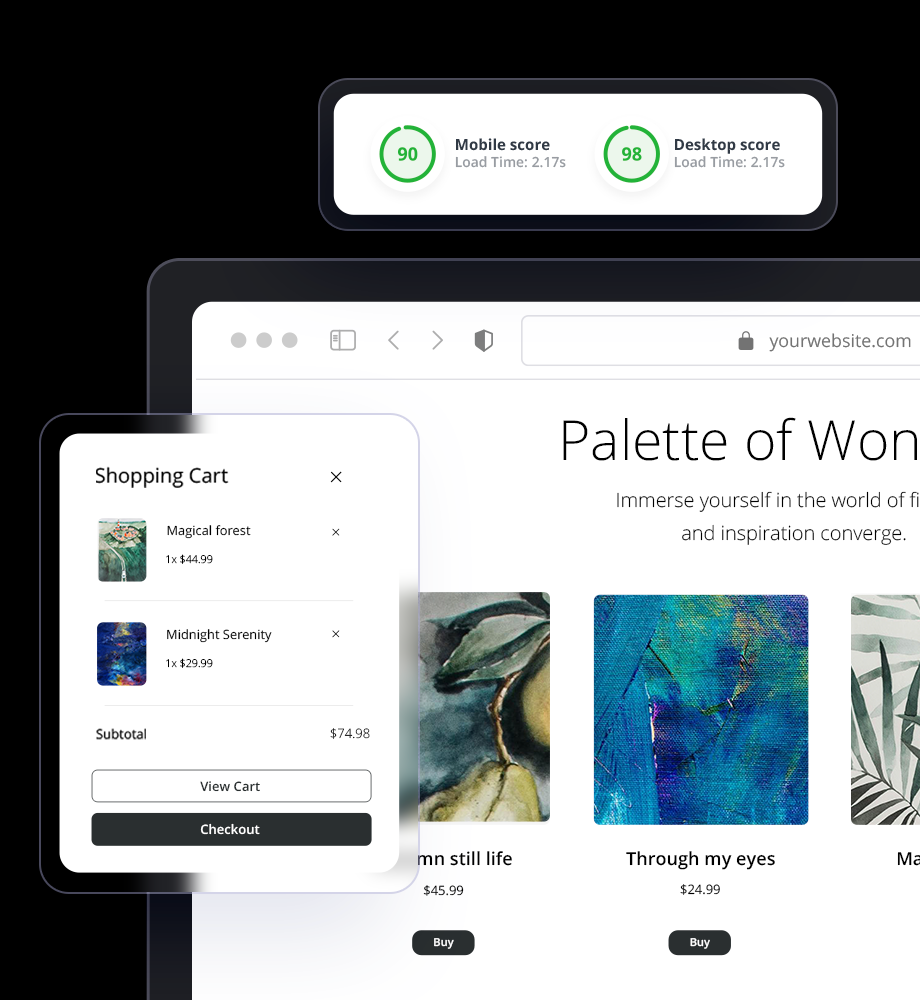





 Create an ecommerce website in 1 minute with AI
Create an ecommerce website in 1 minute with AI 






